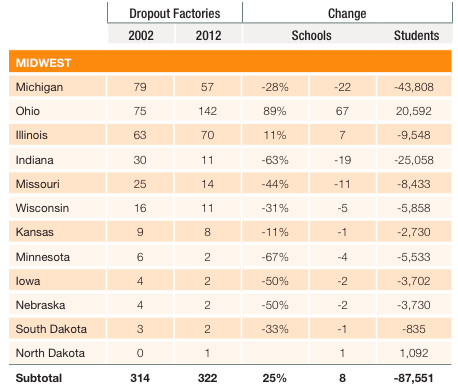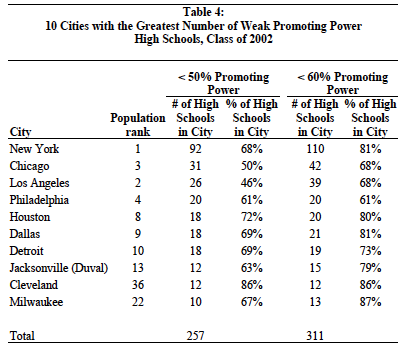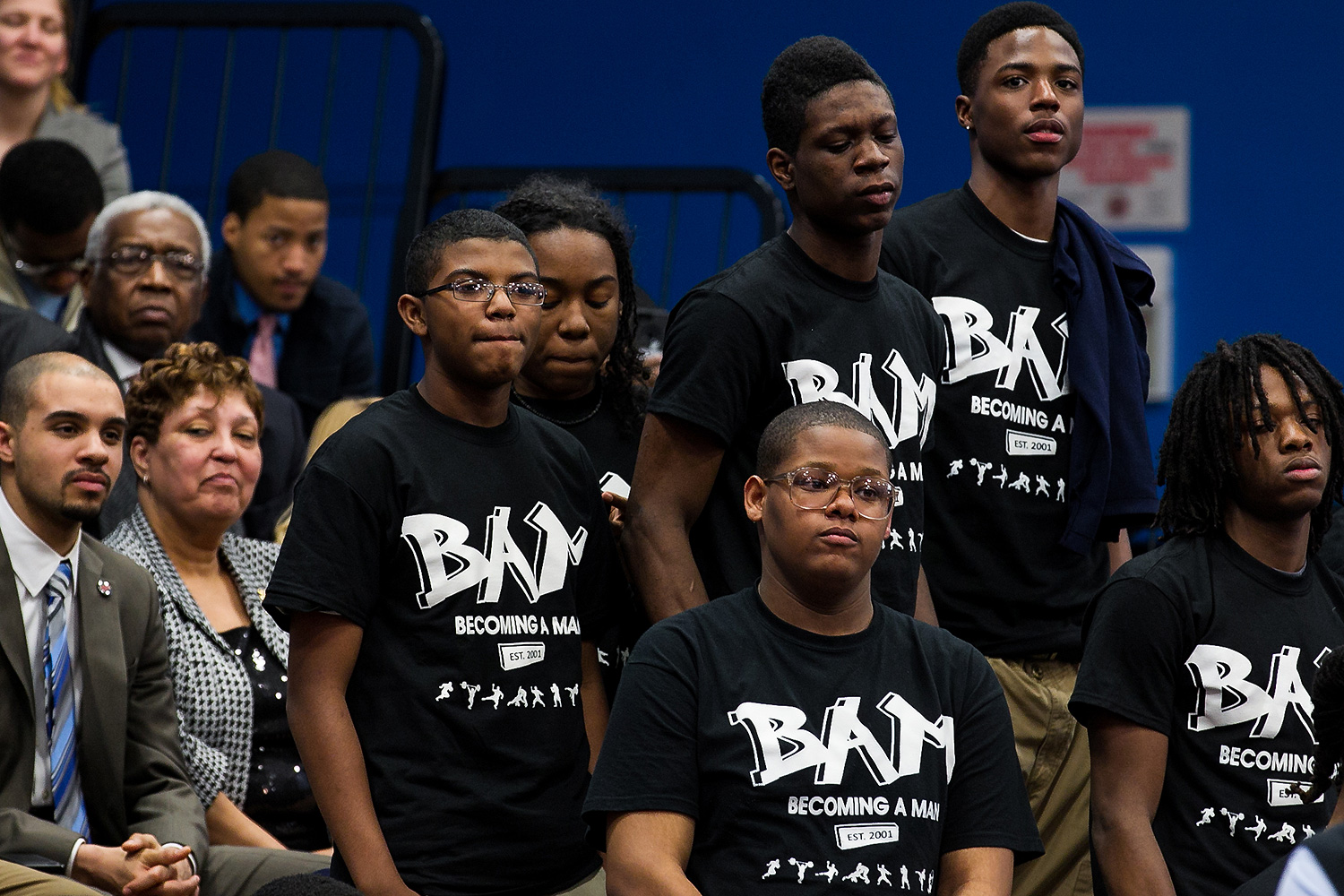One of the struggles for various social-policy reformers, in a time of government austerity, is framing: how best do you make the case for policy changes when resources are scarce? A common approach is to highlight the immense scope of a problem, to bring a sense of urgency to it. But there's a danger: the paralyzing fear of the immensity of the problem.
I'm so accustomed to this that I was completely caught off-guard by a recent New York Times op-ed by Robert Balfanz, who studies education at Johns Hopkins:
In fact, according to new research I conducted with my colleagues at Johns Hopkins University, half of the African-American boys who veer off the path to high school graduation do so in just 660 of more than 12,600 regular and vocational high schools.
Obviously that doesn't represent all "dropout factories," which Balfanz has spent years studying. It just represents the schools of one half of dropouts from one group. But it represents a not-insignificant proportion of dropouts overall, narrowed down to a much less fearsome statistic. "Keeping many or even most of those boys on track in each entering ninth-grade class in 660 schools does not seem impossible," Balfanz writes.
As Balfanz notes, these schools tend to be geographically clustered to various degrees—big cities, "smaller, decaying industrial cities," and the South. So, locally and regionally, the problem can seem insurmountable. On a nationwide level, however, it seems a less impossible problem.
Here's what the broader regional statistics look like from Balfanz's most recent work:

In 2002, just before Balfanz published "Locating the Dropout Crisis," he wrote:
What is most significant about promoting power in many of the nation’s largest cities, however, is not the number of weak promoting power high schools but their concentration. In half of these cities, 50% or more of high school students who attend regular or vocational high schools with more than 300 students attend high schools with weak promoting power. In 21 cities, this climbs to 75% of high school students and, for the Class of 2002, it reaches an incredible 100% in St. Louis and Indianapolis. In these cities, attending high schools where graduation is not the norm, is the norm.
Again, it sounds like an epic problem, and it does involve lots of individuals. But here's another way of looking at it:

31 schools in the context of Chicago is, in fact, a lot. But 257 schools, representing 43 percent of all schools in America with low "promoting power" (a statistic designed to capture dropout and graduation rates), doesn't look as unfathomable. More so since relatively modest changes in the meantime have improved graduation rates, and more intensive programs have shown benefits for a smaller number of at-risk students.
None of which is to suggest that the problem of high-school dropouts isn't big, or merely limited to a handful of "inner city" schools. But putting it in a nationwide context—and perhaps, eventually, scaling up some of those local reforms to a national context—makes it easier to get our heads around the issue.



